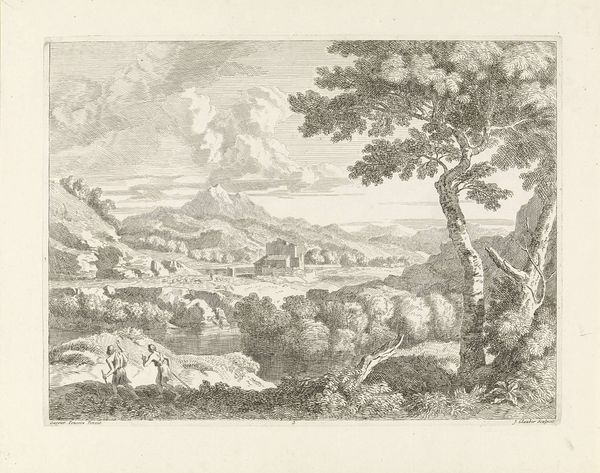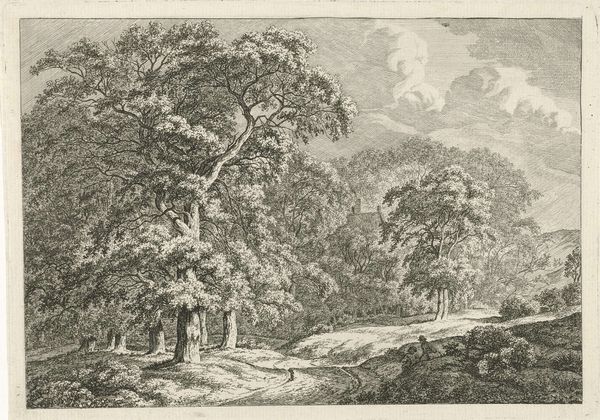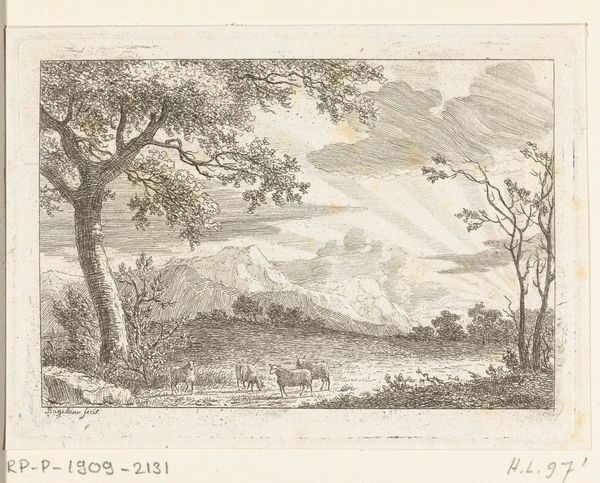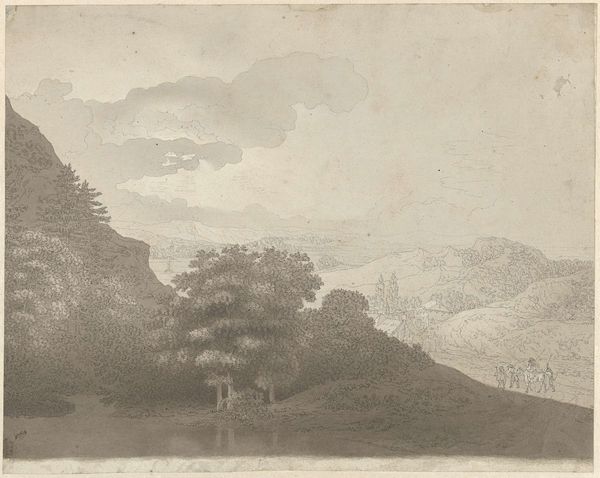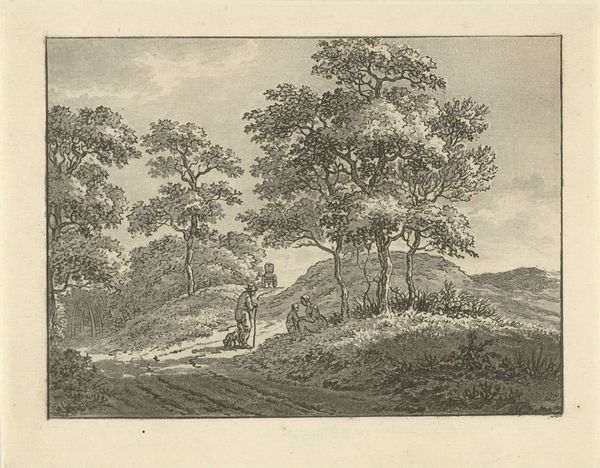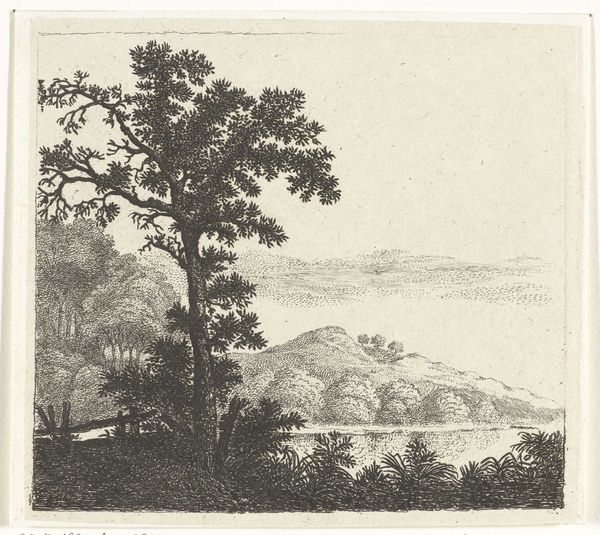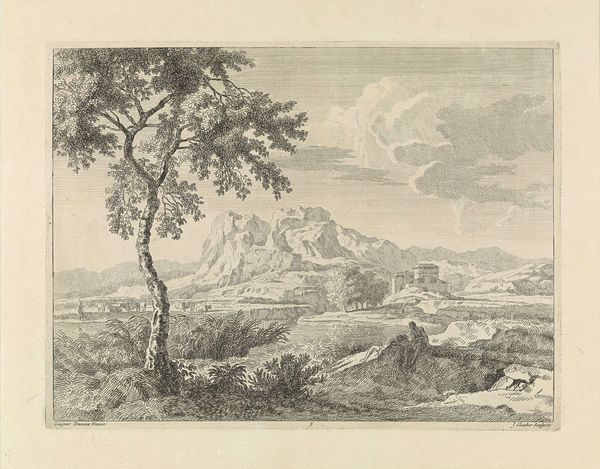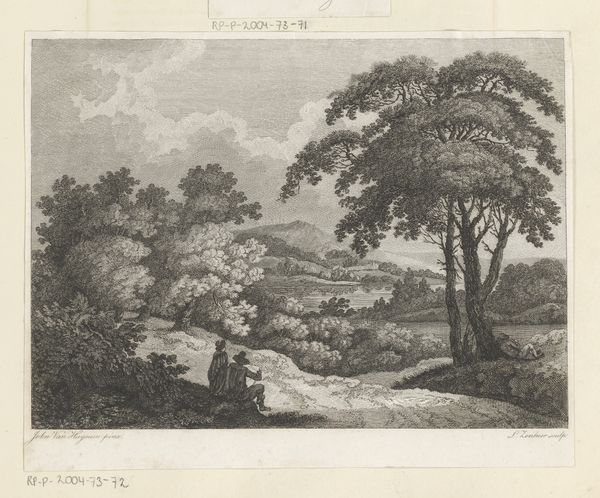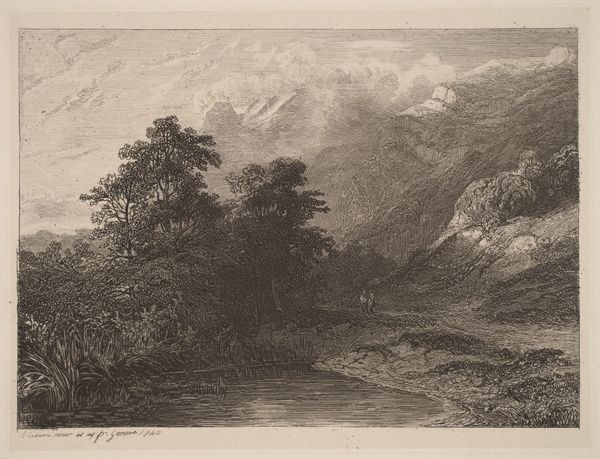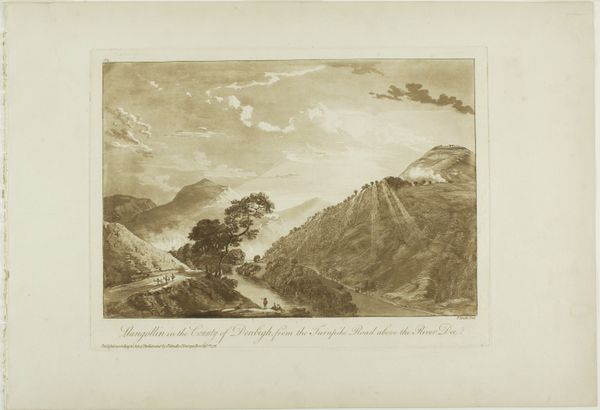
etching, engraving
#
etching
#
old engraving style
#
landscape
#
personal sketchbook
#
romanticism
#
mountain
#
line
#
engraving
#
realism
Dimensions: height 91 mm, width 127 mm
Copyright: Rijks Museum: Open Domain
Curator: Immediately, I'm struck by how quiet this image feels, almost austere, like a memory fading at the edges. Editor: That’s an interesting take! This is a landscape with four sheep, an etching by Ernst Willem Jan Bagelaar. We believe it was made sometime between 1798 and 1837. Curator: A mountainscape, certainly. But there’s this dreamlike quality to the light, almost as if the sun is sighing onto the scene. And those sheep, huddled together, seem to carry the weight of the hills themselves. Do you feel the almost sublime emptiness? Editor: The social dimension is really interesting here because pastoral scenes like these were incredibly popular during the Romantic era. They served to reflect not just an idealized view of nature, but also the social harmony between humans and their environment, often for urban viewers removed from it. Bagelaar presents a vision rooted in an enduring agricultural and natural setting, which is both comforting and maybe a touch melancholy given ongoing industrial expansion at the time. Curator: Melancholy hits the mark. It makes you think about time. Is it flowing forward, or are we caught in an eternal return? Those lines, so meticulously etched, are like the grooves of time etched into the mountains themselves, or into a human heart. Editor: It's technically masterful too. This intimate piece allows for this detailed work that also reveals broader sentiments related to both the societal nostalgia for simple life, even while technical advances threatened that simple existence. Etchings like these made such scenes readily available to a wide public, cementing certain ideas and assumptions about the natural world. Curator: Availability matters so much. Here we have this idea of "landscape" as not just what's outside, but something internal, like the echo of a half-forgotten song, where four sheep symbolize an unsullied vision of pastoral life in harmony with something eternal. And maybe a bit of Bagelaar in each of those sheep too. Editor: Definitely food for thought. I find it striking how this small piece condenses such large historical tensions so well. Curator: And what began as a quiet little landscape has turned into a rumination on time, history and art... which makes it, if you ask me, worth far more than just the paper it's printed on!
Comments
No comments
Be the first to comment and join the conversation on the ultimate creative platform.
